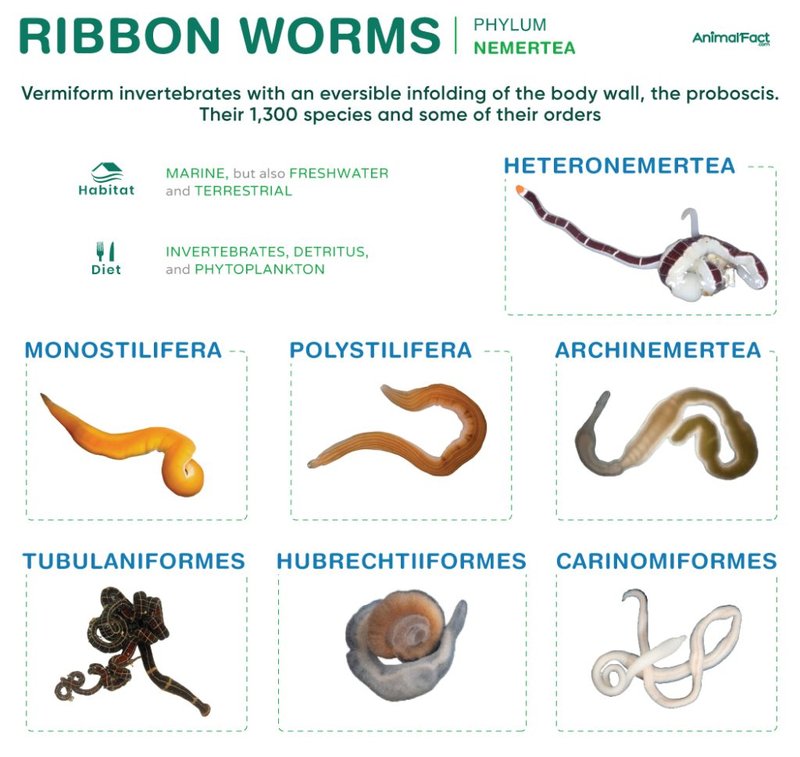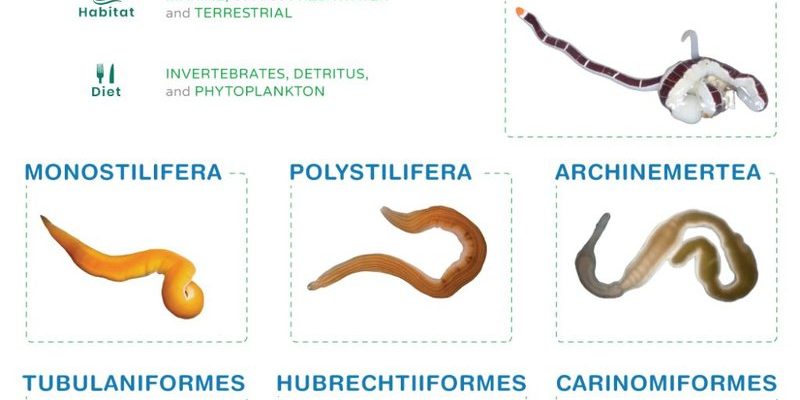
So, how do these slippery, squishy creatures make it all happen? Well, it boils down to a combination of muscular contractions and a fluid-filled body structure. Think of it as a well-coordinated dance made possible by their anatomy. In this article, we’ll dive into the world of ribbon worms, exploring how they expand and contract their bodies. Trust me, it’s more interesting than it sounds!
The Anatomy of a Ribbon Worm
To understand how ribbon worms expand and contract, we first need to look at their anatomy. Ribbon worms belong to a group called *Nemertea*, and they have some pretty unique features. One of the standout aspects of their structure is a special type of muscle system.
These worms have an outer layer of circular muscles and an inner layer of longitudinal muscles. The outer muscles help them narrow their bodies, while the inner muscles allow them to stretch and elongate. Picture this: if the circular muscles tighten, the worm becomes thinner and longer. On the other hand, when the longitudinal muscles contract, the worm can expand and become thicker.
By coordinating the contractions of these muscles, ribbon worms can achieve remarkable movements. They can stretch out to catch prey, retreat quickly from danger, or even crawl along surfaces. This flexibility is a major reason why they thrive in diverse environments, from ocean depths to moist soil.
How Do Ribbon Worms Move?
You might be wondering how all this muscle action translates into movement. Well, ribbon worms like to glide or burrow through their environment, using their body’s unique structures to navigate.
When a ribbon worm wants to move forward, it first contracts its circular muscles. This action pulls in the body, making it longer and thinner, enabling the worm to inch ahead. Next, the longitudinal muscles come into play. They expand the body, allowing it to push against the substrate (the surface or medium it’s moving on). As they alternately relax and contract these muscles, the worm moves fluidly and can easily maneuver through tight spaces.
This method of movement isn’t just efficient; it’s also quite effective for hunting. Ribbon worms are predatory and often use their elongated bodies to strike swiftly at unsuspecting prey. Once they’ve snagged a meal, they can quickly retract their bodies to consume it.
The Role of Hydrostatic Pressure
Alongside their muscular structure, ribbon worms rely heavily on *hydrostatic pressure* to expand and contract. This term might sound a bit technical, but it’s relatively simple. Their bodies are filled with a fluid called coelomic fluid, which creates pressure within their body cavity.
When the muscles contract, they influence the fluid distribution within the worm. Imagine squeezing a water balloon: when you apply pressure to one side, the water shifts, causing the balloon to expand on the other side. In ribbon worms, this pressure helps them stretch out or pull in more easily.
This hydrostatic feature is particularly important for these creatures. It not only aids in movement but also provides stability and support to their otherwise soft bodies. Without hydrostatic pressure, ribbon worms wouldn’t be able to control their shape or effectively hunt and escape predators.
Feeding Strategies of Ribbon Worms
So, why does the ability to expand and contract matter so much for these worms? Well, it’s all about their feeding strategies. Ribbon worms are carnivorous and mostly feed on small invertebrates, including crustaceans and other marine creatures.
When hunting, a ribbon worm can extend its body quickly, often surprising its prey. By using its long, stretchy form, it can rapidly latch onto unsuspecting meals. Once a ribbon worm has immobilized its prey, it can draw its body back in to consume it—a process that showcases the effectiveness of its expansion and contraction abilities.
Some species even have a specialized feeding structure called a proboscis that can be extended out. This proboscis can be shot forward to snag prey, demonstrating once more how vital expansion and contraction are in their daily lives.
Defense Mechanisms and Escape Tactics
Besides moving and feeding, ribbon worms have some clever tricks up their sleeves when it comes to defending themselves. Their ability to contract and retreat quickly can be a lifesaver. If a predator gets too close, these worms can quickly shrink away or hide in crevices and other tight spaces.
Additionally, certain species of ribbon worms can produce a sticky substance that can entrap predators, providing extra time to escape. The speed at which they can contract their bodies often helps them evade threats before they’re even noticed. Imagine a magician pulling a disappearing act—ribbon worms are the masters of this trick in their natural habitat!
Moreover, the flexibility and resilience of their bodies enable them to recover from close encounters. They may get nibbled on but can often retreat, heal, and continue their lives without serious injuries.
The Surprising World of Ribbon Worms
You might think ribbon worms are just another obscure creature, but they hold an important place in our ecosystems. Their role as predators helps control populations of smaller marine life, contributing to the balance of underwater ecosystems.
Additionally, studying ribbon worms can provide insights into evolutionary biology. Their unique adaptations to expand and contract illustrate how organisms can evolve specialized methods of movement and survival. This can inspire new technologies and approaches in fields like robotics, where flexibility and adaptability are highly valued.
So, the next time you think about marine life, remember that even the simplest creatures, like ribbon worms, have fascinating abilities that can teach us both about resilience and adaptation in nature.
In conclusion, the ability of ribbon worms to expand and contract their bodies is a captivating combination of biology and behavior. Whether they are hunting, defending themselves, or simply moving through their environment, these worms show us how simple adaptations can lead to incredible survival strategies. Like a well-rehearsed dance, they perform their life’s routines with grace and efficiency, a testament to the wonders of nature.

